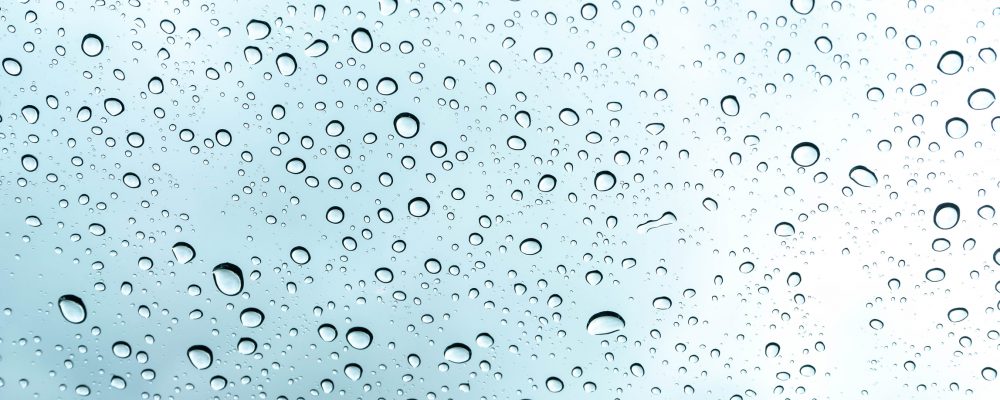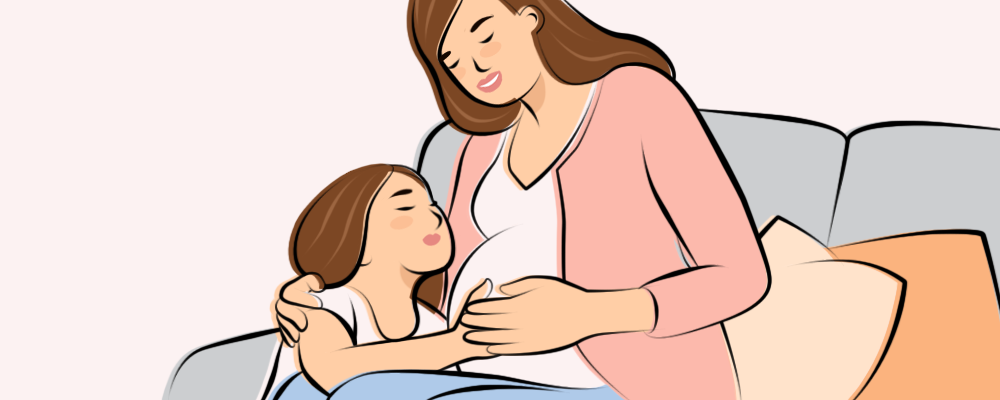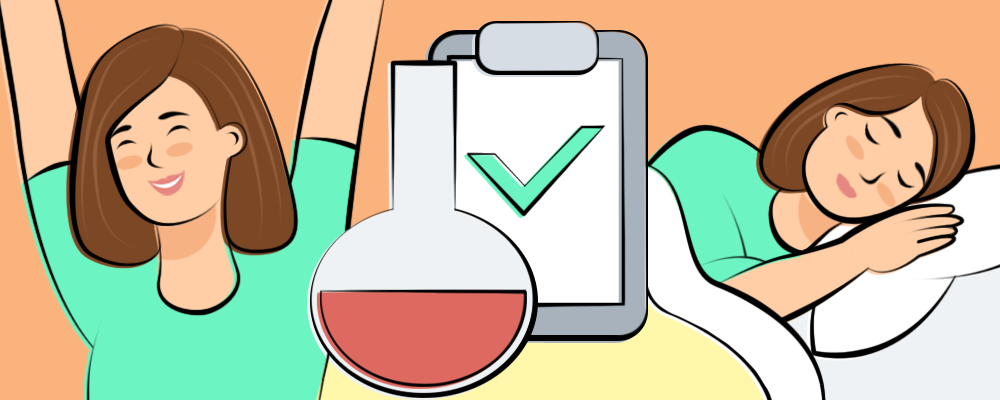If you’ve been suffering from migraines for a length of time, you may have noticed something: attacks seem to be more certain when storm clouds roll in. And if you feel that way, you’re not alone.
In 2016, an overwhelming 81% of respondents to the Health Union’s Migraine in America survey reported that they felt weather changes were their #1 migraine trigger. Other research has found it to be, if not #1, then certainly a contributing factor. In any case, “weather changes” means, more specifically, things like:
- Sudden humidity changes;
- Sudden temperature changes;
- Storms;
- Very dry conditions;
- Dusty environments; and
- Altitude changes;
Among others. But does stormy weather or pressure changes have to mean a migraine for you? Is there really a connection, or are self-reports by sufferers unreliable? And if there is a connection between migraine and the weather, what can you do?
Weather = migraine - true or false?
First things first – can the weather really trigger migraines? It’s a simple question with a complicated answer. Headache and migraine specialists are still trying to understand the causes and biological characteristics behind migraines and other types of headaches.
Migraine attacks often happen as a result of triggers — a factor that when it occurs temporarily increases the odds that you’ll suffer an attack. When it comes to the weather, pressure changes may act as another form of trigger for many individuals. But whether weather is a real cause is under contention, and some studies suggest there is little or no link between weather changes and the frequency of migraines. For example, a 2010 study performed in Vienna involving 238 patients found that the influence of weather on migraines and headaches was “small and questionable.”
But that’s not the end of the story. Several studies since that time have found correlation between weather changes and migraines. To highlight a few of them briefly:
- A 2011 study asked 28 migraine sufferers who lived within 10Km of the Utsunomiya Local Meteorological Observatory (LMO) in Japan to keep a headache diary for 1 year. During the course of the year, the LMO tracked barometric pressures daily and monthly. After 1 year, the diaries and barometric pressures were compared, and 64% of participants had migraine attacks when the barometric pressure decreased.
- A 2013 study from the University of Cincinnati in the U.S. found a 31% increase in headaches and a 28% increase in migraine attacks when lightning struck within 25 miles of each of the participants’ homes.
- And another study, published in 2015, was similar in nature and method to the 2011 one. The later study had a greater number of participants, including a control group made up of patients with tension-type headaches. 78% of the non-control group developed migraine at times when atmospheric pressure decreased, compared to 20% of the control group.
- Finally, another 2011 study, this one from Berlin, found that there was a significant positive association between migraine attacks and the weather; migraine attacks occurred more frequently when the temperature was lower and the humidity was higher.
These studies certainly make it appear as if weather changes could be a trigger for migraine attacks; they also suggest that different types of weather changes can have an affect.
More studies needed
Despite the positive correlation between weather and migraine attacks that these 4 studies show, more research needs to be performed. According to the American Migraine Foundation, this is because a single trigger (i.e. pressure decreasing as a storm moves in, or the weather being particularly humid), is typically not enough to start an attack alone — unless it’s a particularly dramatic change.
Factors that act as triggers of migraine attacks for many include fatigue, stress, and lack of sleep, as well as meals containing monosodium glutamate (MSG), or drinking alcohol. So while there appears to be a direct correlation, it’s important to recognize that other factors were likely present when the respondents in these studies experienced migraine attacks. That makes it difficult to isolate weather as a trigger on its own.
Plus, while the majority of participants in those studies did experience migraine with weather change, it was never 100%. Or in other words: not every migraine-sufferer is sensitive to weather, or the same types of weather changes.
So with that said, scientists may never be able to get more clear conclusions than these studies provide. But you know your individual triggers, so if it seems like you get migraine attacks whenever the weather changes, it’s entirely likely that those weather changes could be acting as one of yours.
Why does the weather trigger migraine attacks?
Since it’s a complicated issue, we’ll start with a simple answer. If you find yourself having a migraine when conditions are particularly dry, it may simply be a matter of exacerbated dehydration – a common and preventable migraine trigger. Or in other words, the weather conditions worsen an already present factor – dehydration – causing a migraine attack.
Or, an especially sunny day could trigger photophobia, or a painful sensitivity to light — another common trigger. And since sleep deprivation — yet another trigger — is common in the U.S., it stands to reason that it’s likely present in many cases, as well.
All this is to say that oftentimes other triggers are present already; so, if weather conditions change, it can be the proverbial last straw – and a migraine attack occurs.
But aside from the presence of other potential triggers during weather change, the actual connection between migraine and the weather isn’t entirely understood yet. For example, one theory is that extreme heat, high humidity, and barometric pressure changes imbalance brain chemicals, in particular serotonin. Another is that fluctuations in air pressure affect the blood vessels which in turn causes migraines.
And if, like the members of the 2013 Cincinnati study, you seem to get migraines when lightning strikes nearby, Dr. Vince Martin, the leading author of several migraine/weather studies says, “There’s something about lightning – whether it’s the electromagnetic waves called sferics that are emitted or whether it interacts with different environmental factors such as mold or different fungi in the environment is really unknown right now. But our research suggests that lightning has a unique effect on headache that cannot be explained by other meteorological factors.”
That should make it pretty clear to see that it’s difficult to isolate a specific cause: different weather changes may provoke different effects; and again, other triggers may be present, further complicating identifying the specific cause.
Are any other headaches triggered by weather changes?
Given the unclear nature of the mechanism by which weather affects migraine, it’s difficult to say. However, since tension headaches were used as a control group in one of the studies we discussed earlier, and the effect of barometric changes was less in that group, it stands to reason that this form of headaches are less susceptible to the weather.
Cluster headaches, on the other hand, may be triggered by hot weather, as this 2014 study suggests, with a greater occurrence when the temperature shift is more extreme. But that comes with a now-familiar caveat: more research needs to be performed in that direction, as well.
How to treat weather migraines
Recognize your triggers
According to Orrin Devinsky, M.D., a neurologist from the New York University, recognizing your own triggers and taking steps to prevent them can be one of the most effective ways to prevent migraine attacks. For example, according to the Cleveland Clinic, there are many groups of foods, ingredients, and additives that most migraine sufferers should avoid, like:
- Aged cheese;
- Alcohol – especially red wine, beer, whiskey, Scotch, and champagne;
- MSG;
- Nitrates and nitrites;
- Especially cold foods;
- Caffeine.
More specifically, that means foods like:
- Pickles, sour cream, and pizza;
- Sausages, hot dogs, and peanut butter;
- Nuts, pizza, citrus fruits and juices;
- Coffee, tea, and coke.
Not everyone will be susceptible to the exact same foods or groups, however – this is simply a partial list of those that have consistently shown a connection with migraine attacks.
Pay attention to when you get a migraine in relation to your food consumption. If you find yourself constantly getting migraines after eating or drinking certain foods, then make a note and avoid it from then on.
But food isn’t the only type of trigger to watch out for, either – staying hydrated, well-rested, and not skipping meals is important, too, says Dr. David Dodick, a neurologist at the Mayo Clinic of Arizona in the U.S.
If you know a storm is on its way, it’s also important to stay inside during especially warm or humid parts of the day and avoid stress if possible. If you can, try to adjust your schedule so that you don’t become too fatigued or stressed during weather changes.
Keep a migraine journal
To help avoid triggers in preparation for weather changes, you first need to know what they are. Migraine diaries have been mentioned several times in studies throughout this post and in the last section.
So if you aren’t already keeping one – start doing so. In it, track the frequency, duration, and severity of your migraines. Keep track of your diet, so you can identify possible trigger foods as time passes. Also make sure to include any medications you’re taking and their doses.
There are many different formats you can use to keep your journal. For example, you can opt for a hard-copy notebook or calendar. Or, you can try apps or computer-based programs. Whatever you choose, the important thing is to be consistent so you can track trends over time.
Here are a few resources to help you get started:
Apps
Printable templates
Computer-based
Old school
- Hard-copy calendar
- Excel spreadsheet
- Notebook
Medications
Prevention is, as they say, the best medicine. But failing that, when the weather changes and you find yourself under (migraine) attack, you can turn to medication to ease the pain.
Non-steroidal anti-inflammatory medications (NSAIDs), like ibuprofen (Advil, NeoProfen, Caldolor, etc) and naproxen sodium (Aleve, Anaprox, Naprosyn, etc), are the most well-known and long-used to treat acute migraine. There are other, relatively newer medications known as triptans, as well – sumatriptan, rizatriptan, and eletriptan – as another option.
Move house
If you’re controlling your triggers to the best of your ability, but you continue to get migraines when the weather changes – and it does so often enough to disrupt your life – moving to a region with a different climate isn’t such a radical idea.
Of course, this isn’t always possible for everyone. But, if you decide to entertain the idea of moving, you’ll want to avoid regions with extreme temperatures and sudden, rapid weather changes; that means mild climates are the places to go.
Global weather data analyzed here suggests that tropical regions have the lowest change in barometric pressures — i.e places closer to the equator. But, there are some exceptions – for example, in the U.S., coastal California had very small barometric pressure variations compared to others of similar geographic location. Likewise, Portugal, Italy, and the Balkans in Europe had small pressure variations as well, relative to their location – making these places also potentially good places for migraine sufferers to live.
Wrapping up
As we mentioned a few times throughout the article, more studies need to be performed and better methods devised for those studies to isolate how weather affects migraine.
But, with that said, there does appear to be a connection between the two, if only as another trigger to be aware of. So you aren’t crazy – a change in the weather can cause your migraine – at least in part. It’s one trigger you can’t control, but you can manage other ones. Do that, and you may be able to prevent a migraine attack the next time a storm system moves into your neighborhood.




